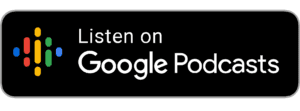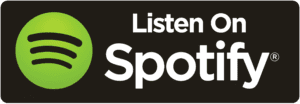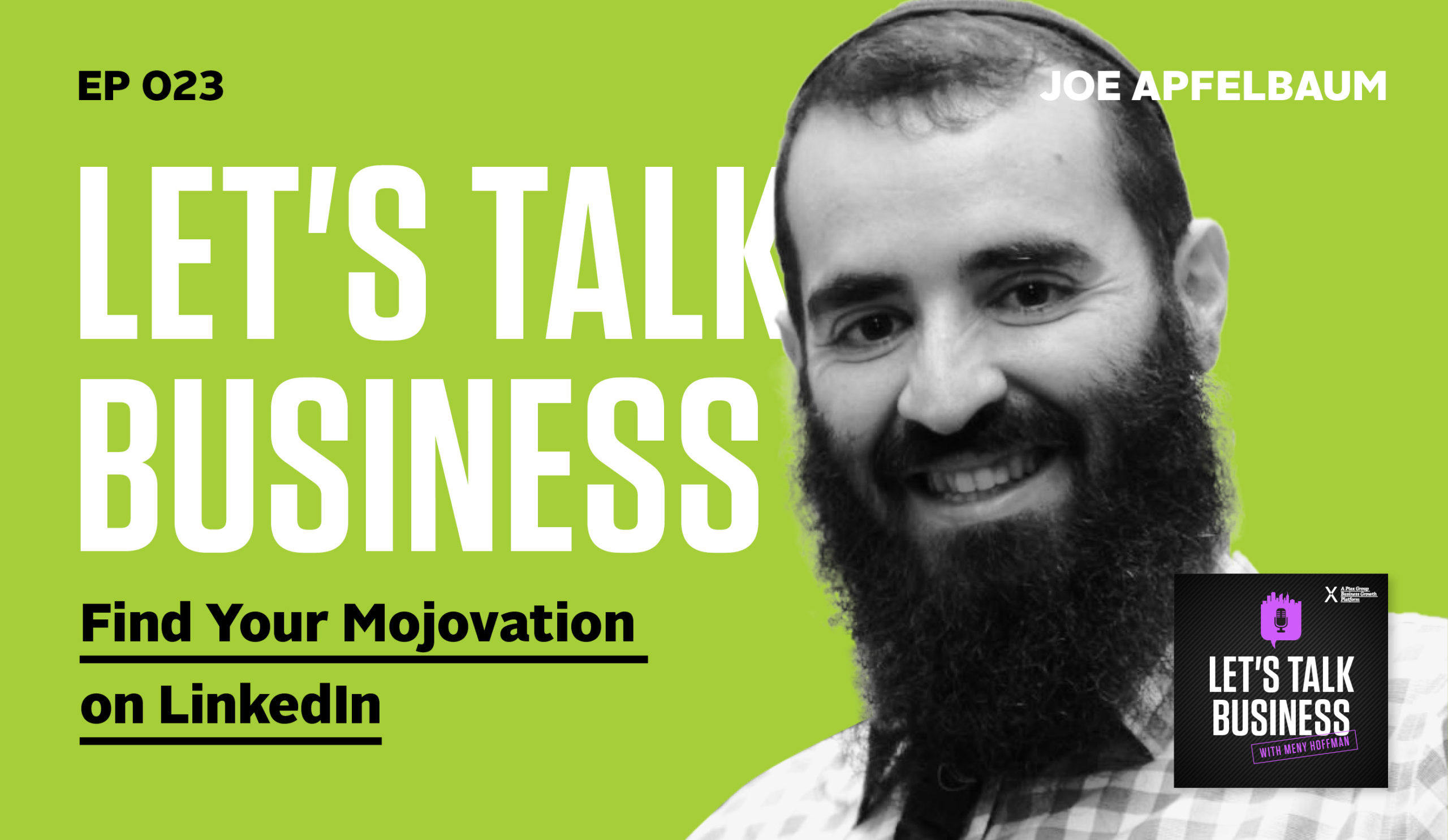Are you struggling to lead a stay-at-home virtual workforce?
This week Meny Hoffman interviews Leah Faul, the Founder and Owner of 15000 Cubits—a digital marketing agency based out of Houston, Texas that she built from the ground up with an entire team that works remotely. Leah explains how you can cultivate an innovative culture that motivates and unifies your virtual workforce around your core values. She covers some of the newest trends in digital marketing that you can leverage to get the leads you need from online media. Finally, Leah gives practical advice for making sure your website is SEO friendly. Listen and enjoy!
Listen to the podcast here:
Download the audio file here.
How to Build a High-Performance Virtual Team—with Leah Faul
—
Leah, thank you for joining us on this show.
Thank you for having me.
We’ll get into a conversation about your agency, but the name of the agency, how did that come about?
15000 Cubits stands for something near and dear to my heart, and it has to deal with my belief system. When I was starting the business, I was reading a book called The E-Myth. One of the things it talks about is that you have to start with the end in mind. I was going through this exercise of thinking about what do I want to do and what do I want to accomplish with my business. I kept going back to as a digital marketing strategist and technician—that being the skillset that I had and that being what I was going to create the business off of—what I wanted to do though had more to do with who I wanted to do it for.
That revolves around those individuals that are acting in faith to build something that they believe is a positive impact on the community or world. They’re taking steps of faith and making action to make that thing happen. With digital marketing, I wanted to support individuals that were doing that. I personally looked at what did that mean to me. I went back to the Bible and Noah building the Ark, and it is 15,000 cubits. The name stands for taking an act of faith and taking action to build something based on what you believe in.
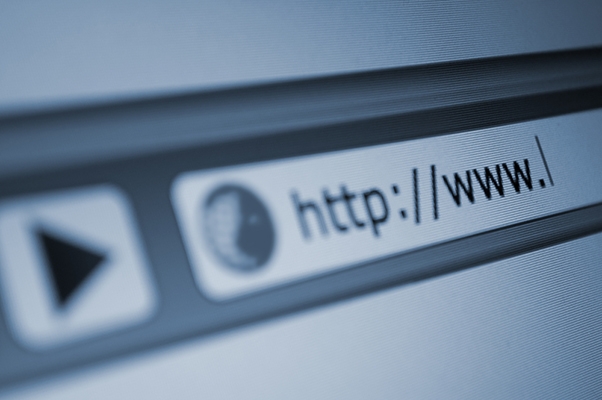
For a lot of readers that may or may not remember, Michael Gerber was our first guest on the show in our first episode. I love when I speak to like-minded individuals when they don’t have to find out about the stuff that Michael teaches in other people like teach years in the making as they’re preparing to launch a business. Speak to me about what you learned from The E-Myth at that time and what you implemented in your business right from the get-go?
Michael talks about how a lot of business owners start out exactly where I started out. I was reading The E-Myth when I started the company and right before I even had the opportunity, that was the catalyst to starting the company. Michael talks about technicians and how technicians have this belief that it’s going to be easy. They’re great at what they do and think they can translate that into a business.
For me, it was a journey of about 1.5 years before that statement and that part of his book took life for me. When I started adding employees and started growing beyond myself, I realized I had no idea about HR, I had no idea about accounting, and all of these other things outside of marketing, marketing strategy and growing a business that were important. That was an early and consistent lesson that I’ve learned is that the one thing that I was skilled and talented in was not enough. It was important for me to maintain a posture of growth mindset and maintain that mentality of I’ve always got more to learn and always growing myself.
As a business owner and a leader in your own company, how do you make sure that passion, excitement, the way you’re thinking, your mindset is a mindset that you could have your employees shared with?
It revolves around the value system. One of the things that I was intentional about in the beginning was taking a core value system, which is a belief system that you have that helps you make decisions and figure out right and wrong. And one of the things that was a fundamental belief of mine was that an organization has to have a value system, whether it defines it and puts words to it or not. There’s a way where when you have multiple people in that organization, they’re making decisions and working together in alignment with values, whether those be “right or wrong” values. Intentionally creating a value system, our values as a company are people first. Every single person has intrinsic value.
That’s fundamental to maintaining my team members’ joy in what they do and feeling that value and passion, but also a growth mindset. As we were a small company, a startup company, we’re moving and growing at lightning speed that comes with a lot of tumbles and failures. Growth mindset is having that mindset that there is no failure, that everything can be viewed in a positive light, that everything can be a part of a catalyst towards growth and good things. Our third value says, “It’s celebration culture.” To us, that means joy and finding joy in what we do, and checking ourselves if we’re losing our joy and celebration, and realizing that we have control over that.
The last one is a commitment to excellence that we focus on. To answer your question, those values being communicated intentionally throughout the organization are the fundamental thing that is the tool to ensure that everybody enjoys what they’re doing and has passion about what they’re doing. It also is something that we hire, fire, train and stay committed to this value system. It protects those individuals that have that value system. It’s a group of people that are all in sync with that.
One of the things that I found fascinating that you mentioned is that you started the agency growing with ten-plus team size. You set up a way that everybody should be able to work remotely. I know that pre-COVID, there were a lot of debates between leadership, how much you could infuse culture and core values for a team that’s remote versus a team that’s internal that you huddle and speak together.
[bctt tweet=”An organization has to have a value system, whether it defines it and puts words to it or not.” username=””]
You’re basically in the same office space. Post-COVID things changed because a lot of companies are changing the way they are allowing their people to be working from home and other remote locations. Speak on that topic. Have you seen any disconnect on core values by people being remote? Also, if you could expand as far as if you do feel it’s working for you, what are the things that you’re putting in place to keep that?
Having started the company being virtual from the get-go, some interesting things have changed since COVID. In the beginning, we operated almost like it was a disadvantage for us in the marketplace where we would try to make things look like we had a brick and mortar. We make it look like we weren’t virtual because we felt like, whether it was a valid feeling or not, we felt like it was perceived as a disadvantage or something that made us less strong as an agency.
Now we realize that it’s something that makes us strong in the marketplace. We’re able to help our clients understand how to be more efficient and effective in the virtual setting in our everyday conversation with them because we’ve been doing it for so long. We have learned a lot the hard way about virtual. There are a lot of resources that teams like ourselves, that have been doing it for a while, are taking that step of being the influencer and communicating about how they’ve done it. So there are a lot of resources out there now and ideas that people can find.
Many years ago, when we were trying to figure it out, there wasn’t a lot out there so we tried a bunch of different things. Some of the things that we found that worked for us many years ago are things that we still do which are scaling up and making some of these cost-effective. We’re finding ways to do that. One of the things that we’ve always done is I personally would go to the dollar store or somewhere to get cheap little knick-knacks and send things out, whether their little party hats or party favors. One time it had a little rainbow unicorn piñata that I cut a hole in the top of it and made it a pencil holder for everybody.
As we grew as a team, it was this unifying thing where whether you are in Maryland or California or Texas, you’re able to be on a video chat and hold up your pencil holder. There was this unifying thing that everyone knew that their office area was starting to have some of the same stuff in it. Now, we have this thing where I’ve got about twenty different glitter pineapples where when you push it up, it’s gold and down, it’s silver. Every time somebody has a birthday, they get that pineapple. Doing those things in making the physical come to the virtual is important, having physical things that tie everyone together.
Another thing that I learned the hard way is that you have to clearly define. It makes it even more important to be definitive about your value system and to be definitive about the boundaries of which the way people work because it’s not as clear. Our onboarding had to get very clear and concise because if you think about it when somebody walks into a brick and mortar, everyone innately knows where the break room is and what’s appropriate for breaks because they see everyone doing it. They know where it’s appropriate to talk in a certain way and do certain things because you’re able to see it. It makes sense in a brick and mortar setting.
You don’t know when you’re joining a virtual team, how do you take a lunch break? What’s appropriate for taking little mini-breaks throughout the day? What’s the appropriate check communication? Can you put GIFs into a community chat or not? Those things seem small, but they’re important to the virtual culture. We have a document that’s about six pages long that talks about the way we work in our video chat, in Slack, in Google Drive and Suite programs. All of those things have ways of which we work. We define that and train on that so that it’s clear because it’s confusing to join a virtual team and not know.

What will be some practical tips as far as making sure that you keep in touch, which means do you have daily calls, weekly Zooms or is there a systemized communication? What would be a couple of things that you feel that are tying the knots and keeping everybody together?
I wish I could say I know the exact measurement for every business but I can’t say that because the first thing that’s fundamentally important is that the leader has a very close pulse on what they feel like the team needs at that given season of the business. What I mean by that is pre-COVID, we only did twice a week video chats and team meetings. We needed less connection in that season and we had got into a groove. When COVID happened, the team needed each other, to see each other and talk to each other multiple times a day. Our world was rocked on a personal and a business level.
Now, as we’ve grown and we have more team members, we found that our sweet spot right now—and I’m not saying it’s going to stay like this forever. I’ve been watching to see if we might even be changing right now—what we do now is a quick ten-minute “coffee break” in the morning. We all get on, see each other’s faces, get a couple of laughs in, and then we go on our way. At the last ten minutes of the day, we also hop on a standing meeting link, see each other, do another couple laughs and leave. Those are the two different sets of ten minutes that are not for work. Those are simply for us to come together. We have one-on-one weekly meetings with our direct managers, and we’ve got a set of different weekly and monthly meetings that are check-ins that are thought out as far as from a business standpoint, what do we need as far as check-ins and connection.
Another question I wanted to ask you, and this is something that a lot of companies, when you speak to them about great culture, you mentioned the two sets of ten minutes, which is not for business but more for getting to know each other and getting some laughs in. I’ve heard it many times that when you open up your culture to those things, ultimately accountability falls, which means holding people accountable comes harder. Now you’re closer to them and you also have a casual setting towards communication. Could you speak on that note? What type of accountability have you implemented across the board and have you seen any lack of accountability because the culture is set up for more interaction and more of a fun-loving type of communication?
It’s important for your value system to reflect accountability and anything else that needs to be there in the business, whatever that might look like for whatever business it is. In our sense, our value of commitment to excellence is that defining value that we go back to in order to ensure that we’re all holding ourselves to the standard of whatever that work quality is or that quality of way of working with each other.
That’s how the value system can support. I’m a big believer that your value system should create ownership and dictate that communication, whether it’s from manager to employee or a team member or whatever that might look like. I also have found personally though, as my team has grown, that it’s been critical that I brought in support in the area of HR. I have a fantastic individual that I work with that helps advise me and helps me grow.
Being a first-time business owner, one of the things that I needed to learn is how to find my voice and how to do it in a way that is in alignment with the value system. That’s been something where I’ve been growing and finding somebody that could advise me, work with my team and with me in a way that helps ensure that our values are protected. Also there is that accountability and that I’m heard where I need to be heard, and boundaries are put in place the way that they need to be.
I want to shift the conversation to the actual services you offer in the agency, which is digital marketing services. This is something that we’ve seen grow throughout the last decade, and even now with COVID hitting where eCommerce has been spiking all across every category that we work with. What have you seen as far as trends in the digital marketing space? Where have you seen people seeing success? If you could give us some golden nuggets in that for business owners that are maybe doing some digital marketing or not doing it as well or people who are thinking of going away from traditional marketing into digital space.
[bctt tweet=”Your value system should create ownership and dictate communication.” username=””]
First off, we work in a coaching aspect with small businesses or solopreneurs. We also work in a retainer and project basis with small to medium-sized businesses. We handle SEO, social media paid, Google Ads and website design. We tie those services together into a suite of growth package for our clients. To speak to your question about what’s shifted or what’s changed: In the pre-COVID, there was a lot of interest around SEO, and I’m not saying that there’s not now, but what we’re finding that is an active driver in a lot of the small businesses that we’re speaking with now is social media paid.
We’ve found that a lot of businesses are realizing that with their employees and decision-makers not being in the office and being at home that they are on social media more and that’s where they can find them. We’re seeing that business owners are interested in it and it’s this tidal wave of businesses moving to social media paid strategies that they’re also seeing success with it. I would say what we’re finding that’s interesting and it’s a common thing that’s coming up is that businesses are thinking that they’re doing Facebook paid and technically they are, but what they’re doing is boosting their organic posts.
What we’ve been doing a lot lately is educating business owners that there are the whole platform and a whole ads platform for Facebook that’s completely separate. It offers this much deeper targeting and advertising and better results than you can get with it and more impact with your dollar. That’s a lot of the major shifts. Even more, there’s been a huge shift from the userbase of Facebook over to platforms like MeWe, Parler and other platforms. We’re seeing this huge shift that’s happening in the way individuals use social media, which is also going to affect how businesses use social media to advertise.
One of the issues with digital media in general versus traditional media for years and decades, if you speak to any larger brands, they had a clearly defined budget and it was going towards traditional media. It was usually a combination of different mediums and media outlets that they would spend the money with. When it comes to digital media, things are shifting and changing rapidly where there’s the shiny object syndrome or business owners saying, “I saw this new way of marketing.” Now it’s ManyChat, Facebook Messenger, text messaging and within Facebook, the different targeting opportunities. How do you keep up with them and how do you advise your clients? Are you trying a little bit of everything or rather mastering one of them? What advice would you give to a small business owner reading this if they want to start looking at spending money on digital marketing?
Usually, our conversations start by trying to figure out what they want to accomplish, and often, it’s that they want more leads. When they’re looking for more leads, we usually look at the type of business that they are and the type of lead that they need to generate. We help them determine the low hanging fruit and where we can say, “You should fundamentally move in this direction because your target audience is here and we can spend money in this way and likely most effectively generate leads.” What I’ve seen is that very often, individuals will start conversations like that. Sadly, I’ve seen that a lot of times, the advice given is, “You need a new website.” What we believe in is that 99% of the time, you don’t need a new website to generate leads.
There are workarounds and ways that you can generate leads with landing pages or within that platform to get your phone ringing and to drive the revenue that you need. If you would like to have a nicer looking website or a more effective website, you can do that when you solve the acute problem of needing more leads. What we do first is we look at what do you want to accomplish and what is the fastest way to do that? What are the other goals that you have? We put a strategy together to accomplish those goals over the course of 6 to 12 months.
Another thing that we have seen, and I wanted to get your opinion on, is the difference between traditional media and digital mediums and what I’ve seen tremendously shifting is we do a lot of traditional brand building from strategy building out. One of the main success metrics for a successful brand is brand loyalty, brand commitment and anything that you would do in order to gain those people to become fans of the brand, which is usually top of the funnel. You engage, and then at one point, they want to buy the product. When it comes to digital marketing, we are flipping that from a top-down, which means there’s not a lot of time to get people excited about the brand because you want to get them to purchase your product. You want them to get familiar with the brand once they started the unboxing experience and then follow up from there. Have you seen that as well from the work you’ve done?

There are a couple of points that I want to hit on that question. To talk to the last part of it, the difference between traditional and digital, I would agree with what you’re saying. Other than that, I would also say that it is important and what we advise our clients is not to focus on what’s called the bottom of the funnel, which is your leads that are ready to buy at the moment. You can use the digital marketing, content marketing and email marketing to build up an audience that is engaged with your brand that is there and active with you so that when they’re ready to buy, they’re going to buy from you. It’s important to do both at the same time, to be working on the top of the funnel and that brand awareness.
Speaking with content and digital marketing to the pain points that your ideal audiences are experiencing. When you’re speaking about pain points, you’re talking about all the things that are wrong in their situation and you are becoming an influencer through content and digital marketing for them. They don’t necessarily want to buy yet, but then you can move them down the funnel and you could move them into that position where they are ready to buy by educating them about your product and your differentiators. I do want to speak to though, of what we’re experiencing in COVID and post-COVID and how the world is working differently. We’re seeing that there is a possibility, and I’m feeling there’s a possibility that physical marketing, traditional marketing and digital marketing are starting to come together in a way like they’ve never done before.
Historically, there was a little mini-wave where digital marketers tried to use something called QR codes. They tried to use those and it wasn’t effective. It was hard to use. It didn’t catch. I’m a big believer in timing. I believe that there’s an opportunity in the marketplace in marketing for physical marketing and digital marketing to come together, for digital marketing campaigns to connect to physical marketing materials. Whether those be posters or flyers or mailers that have those QR codes, you see them. The reason why I think that it’s the right time for it now is because anybody that’s gone out to eat lately knows what’s the first thing that you do in most restaurants? You pull your phone out and use your camera because your camera now has the ability to look at a QR code.
You don’t have to open as a separate app and you pop up their menu. There are lots of tools out there that you can Google where you can create well-designed QR codes for your business, and it sends you to a digital funnel. As individuals, we’re starting to become accustomed and desensitized to using QR codes. QR codes are going to start to become something that businesses are using to connect physical and digital marketing efforts.
One of the mistakes I see a lot of business owners do is let’s say they want to do a bunch of different marketing initiatives and they would hire separate agencies to do it differently. There’s a disconnect between this agency that’s doing digital, they’re not talking to the people that are doing print stuff, and they’re not talking to people that are doing other marketing and trade shows where you’re losing a lot of potentials. You could get way more for each campaign if they’re sinking up and yes, it needs to have their own voice and tone for the platform that it’s on, but share the content and distribute it.
I want to speak to you one final question about SEO. I know that you have been doing a lot of SEO. What is it that you see a lot of companies that do a lot of websites as well, and people will say, “I found that somebody cheaper, somebody outsourced the website,” and they come back two years later, [realizing] then it’s not what they wanted. How important is it to work with some of them who know what they’re doing in order to gain the proper SEO and the search terms on the rankings on the search platforms?
It’s critical. What we’ve seen over and over again is that we’ve had a wave of clients coming to us that had this exact same experience. They went to a great freelance designer or an individual who’s good at design, a one-stop-shop around design and they were able to give him a nice website for a couple of thousand dollars and it looked good. But when you look at the way that it’s set up, there are many things that could be wrong in the way that set up that will cause it to not only not be effective with SEO, but just not work.
It’s hard to distill it down to one thing. When looking specifically at a website, it’s important that the framework and the fundamental layout of that website is connected to the goals that the company has for how they want it to work. If they’ve got service offerings that they want to promote out, if they’re set up to offer their services in geographic areas, is there a strategy on the layout of that website so that the navigation has drop downs for locations? Are there dropdowns for products but that those pages are named in the way that they want it to show up on organic search?
[bctt tweet=”Leaders have a very close pulse on what the team needs at any given season of the business.” username=””]
All the way from the URL to the name of the page, to the title on the page, to all of the different ways that they’re laying out the content and the meta-description, which shows up on the organic search when you’re looking for different things online. All of those things on the website will determine whether it’s going to work on SEO or not. If that website is put together in a way that it looks good, but there hasn’t been any thought into is it going to have the content and the layout so that it’s going to perform, then it will not work like you want it to work. You have to go in and have to do redirects, change content and change the pages.
That can sometimes be a negative thing for Google if you’re having to move things around. It’s a little bit of a riskier play than if you have somebody that sets it up for you the right way on the get-go. The other thing that’s important is every day that goes by that you don’t have that website with the right content, the right structure and those pages with the right words and terms to do what you want it to do, you’re losing value. The way that Google values what they rank and what they don’t rank, one of the main factors is what’s called longevity. How long that content’s been up and Google scrolled it is something that’s a factor on if they rank you or rank your competitors.
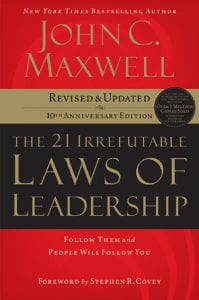
Let’s close with 4 or 5 rapid-fire questions. Number one, a book that changed your life.
The 21 Irrefutable Laws of Leadership.
Number two, a piece of advice you get that you’ll never forget.
“It’s all going to be okay.”
Number three, anything you wish you could go back and do differently?
No, none that I can think of.
Last and final question, what’s still on your bucket list to achieve?
I want to do camel racing.
You’ll come back to tell us when you achieve that. Thank you for joining us. I know your time is valuable, that is why in the name of our readers, we will forever be grateful for sharing some of your time with us.
Thank you.
It’s my pleasure.
Links Mentioned:
- 15000 Cubits
- Leah Faul – LinkedIn
- The E-Myth
- Michael Gerber – Previous episode
- The 21 Irrefutable Laws of Leadership
- @15000 Cubits – Facebook
- @15000Cubits – Instagram
- LinkedIn – 15000 Cubits
About Leah Faul
 Leah is the founder and owner of 15000 Cubits digital marketing agency based out of Houston, Texas. She was recently awarded Houston Business Journal’s 40 Under 40 recognition. She has experience leading teams of all sizes and skill levels in many industries — in-house, agency, and nonprofit. In 2015, Leah founded 15000 Cubits, a fast-growing strategic SEO agency whose team operates completely remotely. She has combined over a decade of marketing and business growth experience to cultivate an innovative workplace culture that unifies and motivates her team members through shared core values, such as integrity, community, creativity, and purpose.
Leah is the founder and owner of 15000 Cubits digital marketing agency based out of Houston, Texas. She was recently awarded Houston Business Journal’s 40 Under 40 recognition. She has experience leading teams of all sizes and skill levels in many industries — in-house, agency, and nonprofit. In 2015, Leah founded 15000 Cubits, a fast-growing strategic SEO agency whose team operates completely remotely. She has combined over a decade of marketing and business growth experience to cultivate an innovative workplace culture that unifies and motivates her team members through shared core values, such as integrity, community, creativity, and purpose.
With experience speaking on the topics like Core Values, Business Growth, Digital Marketing, and Digital Trends on a national level, Leah aims to transform her own personal experience into growth opportunities for others. Her primary work goals are to honor God with her endeavors, empower others to impact the world in a positive way, and to effect change by creating a team of leaders who believe in hard work, honesty, kindness, and aren’t afraid to ask questions.




